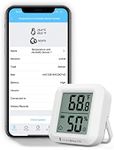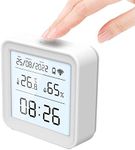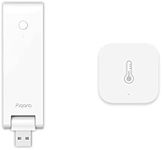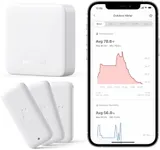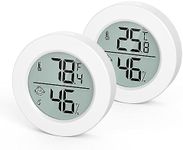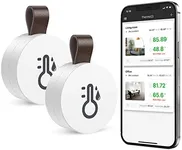Buying Guide for the Best Zigbee Temperature Sensor
When choosing a Zigbee temperature sensor, it's important to consider several key specifications to ensure you get a device that meets your needs. Zigbee temperature sensors are used to monitor and report temperature changes in your environment, and they can be integrated into smart home systems for automation and alerts. Understanding the key specs will help you make an informed decision and select the best sensor for your specific requirements.Temperature RangeThe temperature range indicates the minimum and maximum temperatures that the sensor can accurately measure. This is important because it determines the environments in which the sensor can be used. For example, if you need a sensor for a freezer, you'll need one that can measure very low temperatures. Conversely, for monitoring a greenhouse, you'll need a sensor that can handle higher temperatures. Consider the typical temperature range of the area where you plan to use the sensor and choose one that covers that range.
AccuracyAccuracy refers to how close the sensor's readings are to the actual temperature. This is crucial for applications where precise temperature monitoring is necessary, such as in a wine cellar or for medical storage. Accuracy is usually expressed in degrees, such as ±0.5°C. Higher accuracy sensors are generally more expensive, so consider how critical precise temperature readings are for your use case. For general home use, a sensor with an accuracy of ±1°C may be sufficient.
Battery LifeBattery life indicates how long the sensor can operate before needing a battery replacement. This is important for convenience and maintenance, especially if the sensor is placed in a hard-to-reach location. Battery life can range from several months to a few years. If you prefer less frequent maintenance, look for sensors with longer battery life. Keep in mind that more frequent reporting and additional features like humidity sensing can reduce battery life.
Integration and CompatibilityIntegration and compatibility refer to how well the sensor works with other devices and systems in your smart home setup. Zigbee sensors should be compatible with your Zigbee hub or controller. Additionally, check if the sensor can be integrated with other smart home platforms like Amazon Alexa, Google Assistant, or Apple HomeKit. This is important for seamless automation and control. Ensure that the sensor you choose can easily integrate with your existing smart home ecosystem.
Size and DesignThe size and design of the sensor can affect where and how you can install it. Smaller sensors are more discreet and can be placed in more locations, while larger sensors may offer additional features but could be more noticeable. Consider where you plan to install the sensor and whether its size and design will fit well in that location. Aesthetic preferences and space constraints should guide your choice here.
Additional FeaturesSome Zigbee temperature sensors come with additional features such as humidity sensing, motion detection, or light level monitoring. These features can add value by providing more comprehensive environmental monitoring. If you need to monitor more than just temperature, look for sensors that offer these additional capabilities. However, keep in mind that more features can also mean higher cost and potentially shorter battery life.

